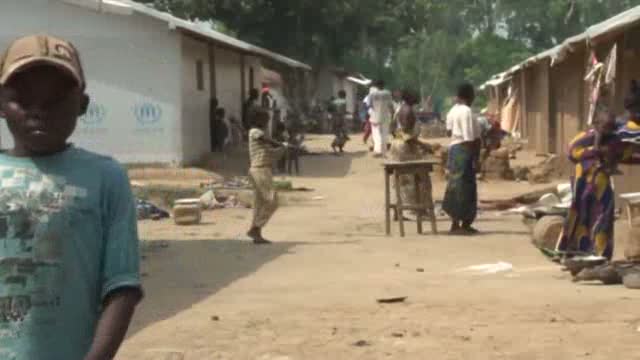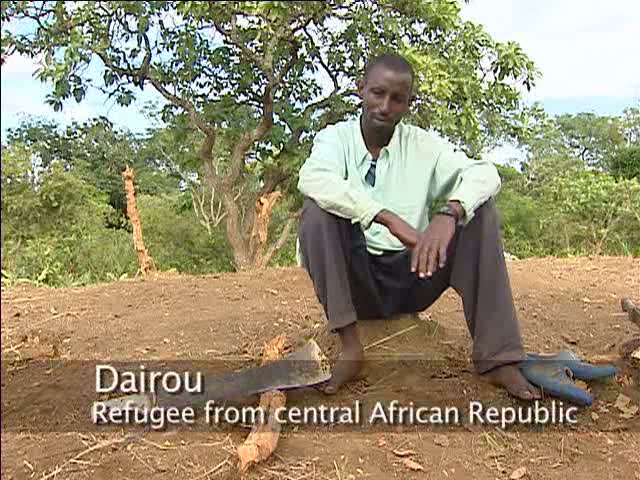Home > Where We Work > Africa > Central Africa and the Great Lakes > Central African Republic
2015 UNHCR country operations profile - Central African Republic
| Overview |
Working environment
-
A history of military coups and rebellion in the Central African Republic (CAR) has caused a sustained economic crisis in the country and impacted negatively on the national institutions' capacity to provide services and protection to the population. The current humanitarian emergency follows two years of political disputes, which have led to instability and widespread violence perpetrated by two opposing groups.
-
Since December 2013, approximately 25 per cent of CAR's population has been internally displaced by the conflict, which has divided the country along ethno-religious lines. At the peak of the unrest in early 2014, more than 930,000 people were displaced. More than half of the population is still in need of humanitarian assistance. Simultaneously, this conflict has had a regional impact, more than 190,000 Central African refugees having fled to Cameroon, Chad, the Congo and the Democratic Republic of the Congo (DRC) since December 2013.
-
In August 2014, approximately 508,000 people remained internally displaced in CAR - a decrease on previous figures - and the refugee influx in neighbouring countries had stabilized. However, daily violent clashes continue to displace thousands already living in dire conditions. As opposing factions control vast areas and armed groups splinter, the situation is increasingly complex and unpredictable.
-
The presence of armed groups affects and limits humanitarian interventions. The looting of warehouses and aid convoys, threats to aid workers, and general insecurity, prevent humanitarian actors from fully deploying to rural areas and can lead to a temporary suspension of their activities.
-
The arrival of the United Nations Multidimensional Integrated Stabilization Mission in the Central African Republic (MINUSCA) in September 2014 to replace the African Union force will have a stabilizing impact but its full deployment is expected to take time. Eventually, it is expected to pave the way for the Government to strengthen its institutions, leading to the restoration of basic services.
-
While the ongoing crisis has had an impact on the mainly Congolese (DRC) and Sudanese refugees, with some 6,000 Congolese refugees having opted to return to their country, the government position on asylum remains constructive.
People of concern
In 2015, UNHCR plans to support the following groups of people in the CAR: the hundreds of thousands of internally displaced people (IDPs) who have been displaced in the country since 2013 because of inter-communal fighting; refugees and asylum-seekers of various nationalities, who are hosted in Bangui; refugees from the DRC, who escaped tribal violence in the north-western part of the DRC and are hosted in Zemio camp; and refugees from Sudan, who fled violence in the Darfur region and are now accommodated in the Pladama Ouake camp, near Bambari.
| UNHCR 2015 planning figures for Central African Republic | |||||
|---|---|---|---|---|---|
| Type of population | Origin | January 2015 | December 2015 | ||
| Total in country | Of whom assisted by UNHCR |
Total in country | Of whom assisted by UNHCR |
||
| Total | 813,380 | 492,180 | 538,370 | 337,830 | |
| Refugees | Dem. Rep. of the Congo | 4,740 | 4,740 | 5,320 | 5,320 |
| Sudan | 5,560 | 5,560 | 5,730 | 5,730 | |
| Various | 720 | 720 | 1,150 | 1,150 | |
| Asylum-seekers | Chad | 690 | 150 | 350 | 60 |
| Dem. Rep. of the Congo | 1,160 | 910 | 580 | 460 | |
| Various | 510 | 90 | 260 | 130 | |
| Returnee arrivals during year (ex-refugees) | Central African Rep. | - | - | 25,000 | 25,000 |
| Internally displaced | Central African Rep. | 500,000 | 300,000 | 300,000 | 180,000 |
| Returnee arrivals during year (ex-IDPs) | Central African Rep. | 300,000 | 180,000 | 200,000 | 120,000 |
| Response |
Needs and strategies
UNHCR, in close collaboration with government counterparts and partners, will continue to provide multi-sectoral assistance and durable solutions to refugees in rural and urban areas in 2015. The possible impact of the ongoing crisis on the protection and assistance needs of refugees will be closely monitored. Advocacy for a national status determination system and discussion on possible local integration opportunities will be taken up with the authorities when political stability has been attained and relevant administrative structures are fully functional.
The main challenge in 2015 will remain responding to the protection and assistance needs of the displaced population. The Office will continue its engagement with the displaced and co-lead the protection, shelter/NFI, as well as camp coordination and camp management (CCCM) clusters.
While it is expected that the arrival and deployment of international peacekeepers will bring a certain level of stability to the country and encourage the IDPs to return to their areas of origin, continued tension and instability will present a challenge to the national authorities, as they seek to fully control the country and decentralize assistance services. UNHCR and partners will play an important role in monitoring the protection situation of displaced and returnees. In the most affected areas, shelter support and domestic items will be provided to the vulnerable.
| Implementation |
Coordination
UNHCR will work in close collaboration with the Central African authorities and maintain its strategic partnership with the Commission Nationale pour les Réfugiés, to protect both refugees and IDPs. The provision of multi-sectoral assistance by national and international partners will be coordinated closely with all relevant stakeholders.
Under the overall leadership of the Humanitarian Coordinator, UNHCR assumes leadership of: the CCCM cluster, with IOM as co-facilitator; the shelter/NFI cluster, with Agence d'Aide à la Coopération technique et au Développement (ACTED) as co-facilitator; and the protection cluster, co-facilitated by the Danish Refugee Council. UNHCR will equally ensure close coordination with relevant MINUSCA counterparts, particularly the protection of civilians unit.
| 2015 UNHCR partners in Central African Republic |
|---|
| Implementing partners |
| Government agencies: Commission Nationale pour les Réfugiés |
| NGOs: ACTED, Catholic Relief Services, Centre de Support en Santé Internationale, COOPI - Cooperazione Internationale, Croix-Rouge centrafricaine, Danish Refugee Council, International Emergency and Development Aid, International Medical Corps, Mercy Corps, Norwegian Refugee Council, Première Urgence - Aide Médicale Internationale, Search for Common Ground |
| Others: UNV |
| Operational partners |
| UNAIDS, WFP |
| Financial information |
Financial requirements for UNHCR's CAR operation have increased significantly since 2011, due to the influx of Congolese refugees and the significant growth of the internally displaced population since the end of 2013.
The 2010 budget of USD 18.9 million gradually increased to reach USD 26.6 million in 2013. The recent conflict and response to the needs of those internally displaced saw an increase in the initial ExCom-approved budget for 2014: the requirements reached USD 73 million by June 2014. The 2015 financial requirements have been set at 51.4 million, but may require revision during the course of the year.
Source: UNHCR Global Appeal 2015 Update























































































































































































































